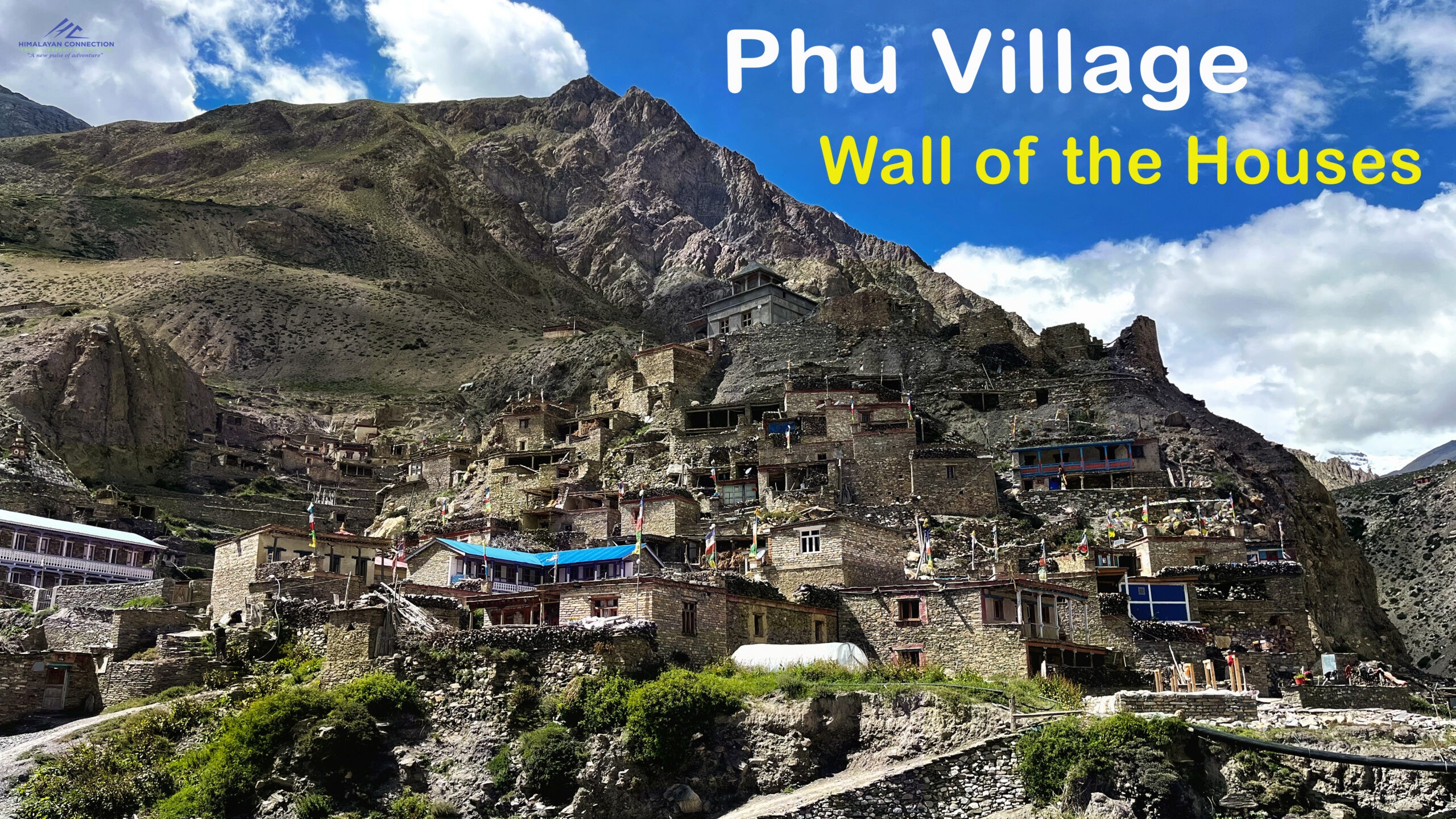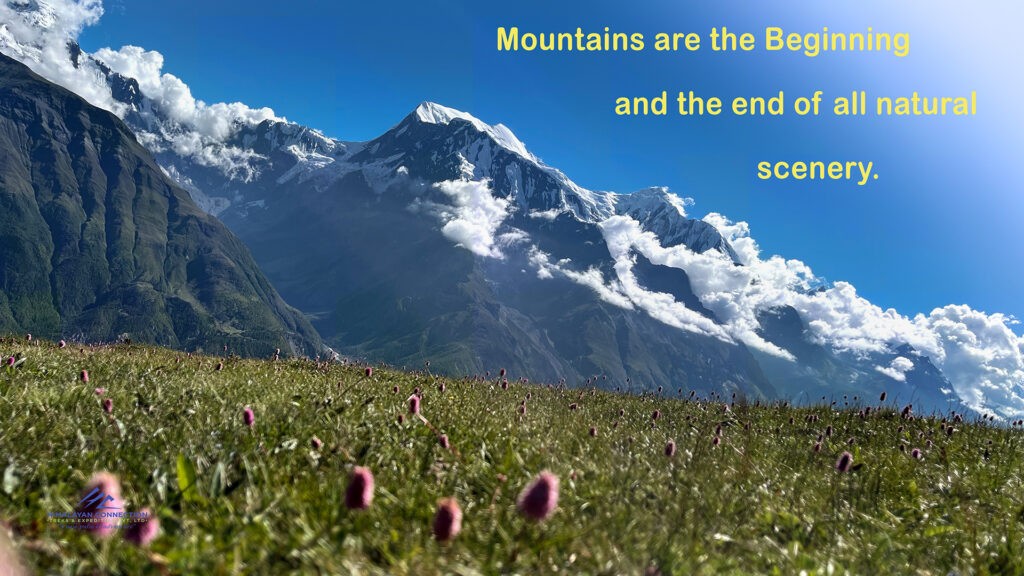
Nar Phu Valley, The rugged, little-explored valley of Nar and Phu, which branch off of Nepal's famed Circuit is progressively opening up to free treks, providing a glimpse into one of the country's least-explored, Tibetan-influenced regions. Nar Phu was formerly only accessible to wealthy, porter-hauled mountaineering expeditions, but it is now more and more accessible to regular trekkers who choose to carry their own packs. With the necessary permissions and a guide, it is now possible to combine modest seven-day treks to a series of stone-walled towns scattered around the Annapurna range with basic village hotels.
One of the best places to see stunning mountains in the highlands is here. And the climb up to Nar and Phu mixes high peaks, glaciers, isolated communities, slender valleys, magnificent forests, magnificent rock formations, yaks, Gompas, and distinctive Himalayan cultures. The Phu is the most picturesque medieval city where you can discover the actual way of life of Bhote communities while taking pleasure in and learning about the wonderful and typical hamlet.
In the Manang district, Nar Phu is a lonely valley that is north of the Annapurna Massif. Because the region is less traveled and full of wildness yet rich in natural and historical beauty, visitors have the unique chance to explore the untouched landscape and less traveled pathways when visiting Nar Phu. The Nar Phu Valley's residents still adhere to traditional Buddhist practices and have kept the area's charming history and customs, making it even more alluring to tourists.
Nar Phu Valley is renowned for its nature and genuine culture as well as for breathtaking vistas of the majestic Himalayas, The settlements of Nar and Phu are located in the secluded Nar Phu Valley. The Valley, which lies between the Annapurna and Manaslu mountain ranges, is regarded as a genuine rare find in the Himalayan environment. The only year the trail was accessible to trekkers was 2003. So, it's a relatively new location that provides you with some exceptional firsthand Himalayan beauty experiences.
The Nar Phu Valley trek takes you through a distinctive terrain, charming villages, and historic monasteries as you make your way deeper into the valley. The nearby Nar Phu Valley is regarded as one of the region's best isolated and off-the-beaten-path hiking routes.
The Nar Phu Valley Trek offers intercultural communication and insights that are not available on the popular and more marketed paths, and it truly takes trekkers off the beaten track. The journey passes through a stunning, austere terrain that is sure to be memorable. This journey, which is frequently coupled with the Annapurna Region Trek or can be done independently, is perfect for thrill-seekers looking for something different.
These remote settlements' highland valleys are encircled by the Himalayas' snow-capped peaks. Tibet's border is to the north. Many of the locals are immigrants from Tibet who have cultural ties to that country. They live in the serene mountains according to Buddhist customs and traditions. Unquestionably one of Nepal's most beautiful treks, the Nar Phu Valley trek is also one of its most underappreciated. An unexplored hiking route in the Annapurna region, the Nar Phu Valley trip has a lot to offer to curious trekkers who are willing to stroll along its paths.
To reach the distant Nar and Phu villages in Tibet, the Nar Phu valley journey takes you through a number of high passes, lovely towns, lush woods, old monasteries, and tight gorges. As the walk continues, you will pass spectacular Chhortens, herds of blue sheep, and some of the world's most pristine landscapes. You will be re-joining the Annapurna Circuit trails after touring the Nar Phu Valley.
Going on a journey through Nepal's Nar Phu Valley is like going on a shorter version of the Annapurna Circuit trek. The Annapurna Circuit walk accounts for over 70% of the Nar Phu Valley trek. Although the Annapurna Circuit Trek and the Nar Phu Valley trek are fairly similar, there are a few features that are unique to the Nar Phu Valley journey. Consider the gorgeous villages of Phu and Nar, two of the most beautiful in the entire area.
The Nar Phu area is hailed as a true royal treasure that offers trekkers a chance to visit uninhabited valleys that showcase a special fusion of untamed Himalayan nature and traditional Buddhist culture. A blend of a cultural, adventurous, and scenic phenomenon is the Nar Phu Trek. The trip's primary attractions include a herd of animals and untamed goats, Gumbas, glaciers, distant ancient towns, the flowing rivers forming deep gorges, wonderful forests, amazing rock arrangement, and medieval distinct Tibetan culture handed down from their ancestors.
The Nar Phu Valley trek offers a genuine, breathtaking glimpse into the Himalayan environment. Between the more popular Annapurna and Manaslu regions, Nar Phu is a true hidden gem that gives trekkers the opportunity to discover pristine valleys with the unique combination of ancient Buddhist culture and untainted Himalayan scenery.

The spring months of March, April, and May and autumn are when the majority of trekkers may be found on the Nar Phu Valley Trek (September, October, and November). These two seasons offer some of the best trekking opportunities thanks to a decent quantity of sunshine and little likelihood of precipitation. This time of year, the vistas of the high peaks are also stunning. You can do the Nar Phu Valley Trek in the winter months of December, January, and February if you are adequately equipped and prepared. Similarly, the Nar Phu Valley Trek is also doable in the summer with the right equipment and preparation (June, July, and August).
The best seasons for a trek to Nar Phu Valley are unquestionably spring and fall when the weather is pleasant and the scenery is breathtaking. They create moderate weather conditions, which makes it simpler for trekkers to ascend the trail. The season is ideal for the Nar Phu trek due to the mild temperatures, pleasant sunshine, fresh winds, and clear skies. In addition, trekkers are rewarded with a rhododendron forest in full bloom in the spring and gorgeous fall leaves in the autumn, making the journey even more amazing.
The weather isn't as spectacular in winter or during the monsoon as it is in the fall. The path is obstructed by the constant gloom, heavy snowfall, and precipitation. Winters are quite cold, and monsoons cause the trails to become slick from the constant rain. Although there are white-washed villages and forests, the vistas are beautiful. Travelers may see snow-capped mountains and glaciers even more clearly when the rainfall clears the sky and the surrounding dust. In spite of this, travelers to the valley must exercise caution.
A difficult trek in the Annapurna range is the Nar Phu Trek. The average trekking time each day is 4 to 7 hours, with several breaks to take in the breathtaking mountain vistas. Long climbs, severe descents, and straight, occasionally rocky roads are all common on trek routes.
Although previous trekking experience would be a benefit, no technical knowledge or abilities are required. The Nar Phu Valley walk can be finished by trekkers who can go 5 to 6 hours each day at a manageable pace while carrying only a small day pack. Some days necessitate keeping awake later. Therefore, you need to be in reasonable shape and ready for long days.
High-altitude trekking is more strenuous than low-altitude trekking. It is a good idea to work out and jog frequently for a few weeks prior to the trip to increase your stamina. Please keep in mind that you will appreciate the walk more if you are physically fit. While trekking through the Nar Phu Valley, it's important to be aware of altitude sickness.
You should therefore fully acclimatize while on the trek. Along with physical fitness, you also need a positive outlook, self-assurance, and unwavering resolve.
The highest elevation in the Nar Phu Valley trek is 5,306 meters.
The Nar village walk offers extremely basic lodge/teahouse accommodations. It is much more simplistic here. You'll have a simple bed, mattress, duvet, and pillow in your sleeping quarters. The teahouses have very few amenities. There may be no electricity in some areas, however, the dining room is powered by solar energy. Cell phone and camera batteries can be charged for an additional fee.
There are three permits required to obtain permission for the Nar Phu Valley trek. They are:
1. Special Restricted Area Permit (RAP)
2. Annapurna Conservation Area Permit (ACAP)
3. Trekkers’ Information Management System (TIMS) Card.

Trekking in the Nar-Phu valley is a perfect way to get away from the crowd and visit an unexplored and unique destination in Nepal. The trek starts from Koto, on the Annapurna Circuit. It ascends through a narrow valley to the village of Meta. From here, the landscape changes from lush green forests to stark rocky cliffs and becomes drier as you enter the rain shadow of the Annapurna range.
Phu village is located above 4000 meters and is home to preserved Tibetan architecture and culture, including a centuries-old Buddhist monastery. You can also choose to spend an extra day hiking to the Himlung base camp. After descending back down the valley, you can stay the night at a monastery at Nar-Phedi
and learn from the local monks about Buddhist traditions.
You will have beautiful views of the snow-peaked mountains as you climb to Nar village, which is located in a beautiful high-elevation valley and also preserves medieval Tibetan architecture styles. From Nar, it is a challenging and rewarding trek to the top of the Kang La pass at over 5,306 meters. Crossing over the pass, the entire Annapurna range comes into view, and you descend back down to Ngawal, where you can continue trekking the Annapurna Circuit towards Manang.
Nar Phu Valley is a beautiful and remote village situated within the Annapurna Circuit and falls in the Manang district of Nepal.
Nar Phu is a remote valley that is one of the off-beaten trails of Nepal. It is far away from the hustle and bustle of the cities and filled with modern amenities.
The highest elevation in the Nar Phu Valley trek is the Kang La Pass situated at an elevation of 5,306 meters above sea level.
There are three permits required to do the Nar Phu Valley trek which are- Restricted Area Permit, Annapurna Conservation Area Permit (ACAP), and Trekkers’
Information Management System (TIMS) Card.
Nar Phu Valley trek is a moderate to strenuous trek which best requires prior trekking experience but a novice trekker can also complete this trek with patience
and perseverance.
The best time to do the Nar Phu Valley trek is during the spring season (March, April, and May) and during the Autumn season (September, October, and November.)
The Nar Phu Valley trek starts from Koto Manang